Another swimming pool season is inching closer and closer, which means the time to open up your pool is soon approaching. But what if you don’t want to open your pool this year? Can you leave it closed and covered all summer? If you’re asking yourselves these questions, than this is the post for you.
Normally, this pool opening season is met with great excitement, as pools owners wait with anticipation for the moment they can finally get back into their pool. But not this year. Maybe you plan to travel more than normal, or the pool needs a major renovation, or for financial reasons, you’ve decided the pool shall stay closed for the summer. OK, what now? You know what to do to close a pool and open it again, but what do you do to keep a pool covered and closed?
Let’s dive into some tips for keeping your pool closed all summer.
What Should You Do?

First, even if your pool is closed, you still need to maintain it. Pools are not designed to stay stagnant during the warm months of the year, and pool covers deteriorate faster in strong summer sunlight. Leaving the pool closed all summer is a guaranteed way to end up with a green, smelly mess and permanent stains or damage to the pool surfaces.
We recommend brushing the pool well, and adding water balancers as needed. Then add a stain and scale preventing chemical, followed by a strong algaecide, and a floater full of chlorine tablets. All of these chemicals are included in our winter chemical kits.
Furthermore, keep the water level below the skimmer line to avoid damaging your plumbing equipment. Use a cover pump to remove any excess water on top of your pool cover. Rainwater can settle on the cover and then drain into your pool, raising the water level. Water also weakens the cover fibers over time, making the cover less safe. Keep the pool water level a few inches below the tile, or 8″–10″ below the cover.
Phone a Friend
If you can’t manage all this work, ask a neighbor, a family member, or a pool service to maintain the water regularly. Without maintenance, your pool liner or plaster will deteriorate and cost a pretty penny to fix when you choose to reopen the pool.
If you don’t mind the possibility of permanent stains, and possible damage to the pool structure, you can forego any maintenance. This is a good option if you are planning to start from scratch with a pool renovation.
Don’t Drain the Pool!

Whatever you do, do NOT drain the pool. Pools are not meant to be empty for an extended period of time and. This will lead to extensive damage and costly repairs. The damage is different for inground pools and above ground pools, but equally devastating.
If your pool has a vinyl liner and you drain all the pool water at any time of the year, you risk ruining the pool liner. Especially for older liners, if you drain the pool completely, the vinyl liner will likely rip when trying to refill the pool later. The liner will shrink, harden, and slowly disintegrate if not left filled with water.
Inground Pool Damage
Inground pools face a different threat. If you drain your inground pool for any length of time, you’re likely to see cracks form in the plaster, which will shrink and crack if left dry in warm temperatures — even with a pool cover on it. Delaminations can also occur, leading to “pop-offs” of plaster in areas of the pool.
Having no water in your inground pool lends the potential for catastrophic damage. If you drain your pool completely, and the water table around the pool is high, the hydrostatic pressure of the ground water can actually lift your concrete or fiberglass pool out of the ground. It can also ‘float’ vinyl liners, forcing large puddles of water underneath the liner.
Above Ground Pool Damage
For above ground pools, a drained pool won’t only destroy your vinyl liner, but possibly collapse the pool’s metal walls too. Above ground pool walls are designed to stand up to the sheer force of the water weight, and without that force pressing outward, the walls could fall inward in a strong breeze.
Our Recommendation

Really, you should always open your pool. Believe it or not, opening your pool will save you a truckload of money in the long run. If you keep your pool closed, you will have to drain it, acid wash, or replace the liner the next time you open the pool. Other problems often also occur to the pool or equipment, when a pool stays hibernating.
So unless money is a concern, it’s best to either open and maintain the pool yourself, or hire a pool service, or a local kid home for the summer. Especially if you plan to travel extensively or be out of town for long periods of time.
An option for above ground pool owners is to disassemble your pool entirely if you know you won’t use it for a long time. Just plan on replacing the pool liner when you re-install your pool down the road.
Another option is to open up your pool and keep it covered, but run the pool filter less. The best combination for this scenario is to use a solid pool cover and run your filter for about 3–6 hours a day. Good water balance, a bit of chlorine, and daily filtering will help keep the pool water fairly fresh.
In Summary…
If you’re not opening the pool this year, you have 3 options:
- Keep it closed, but maintain good water balance, a good water level, and use chlorine tablet floaters, algaecides and stain away. You can find all of these chemicals in our winter kits.
- Open the pool, but keep it covered all summer, and run the filter only as much as needed. Keep the water balanced and chemically treated.
- Keep it closed and maintain proper water level. Open next year with a drain and clean, or replace the plaster or vinyl liner at the same time.

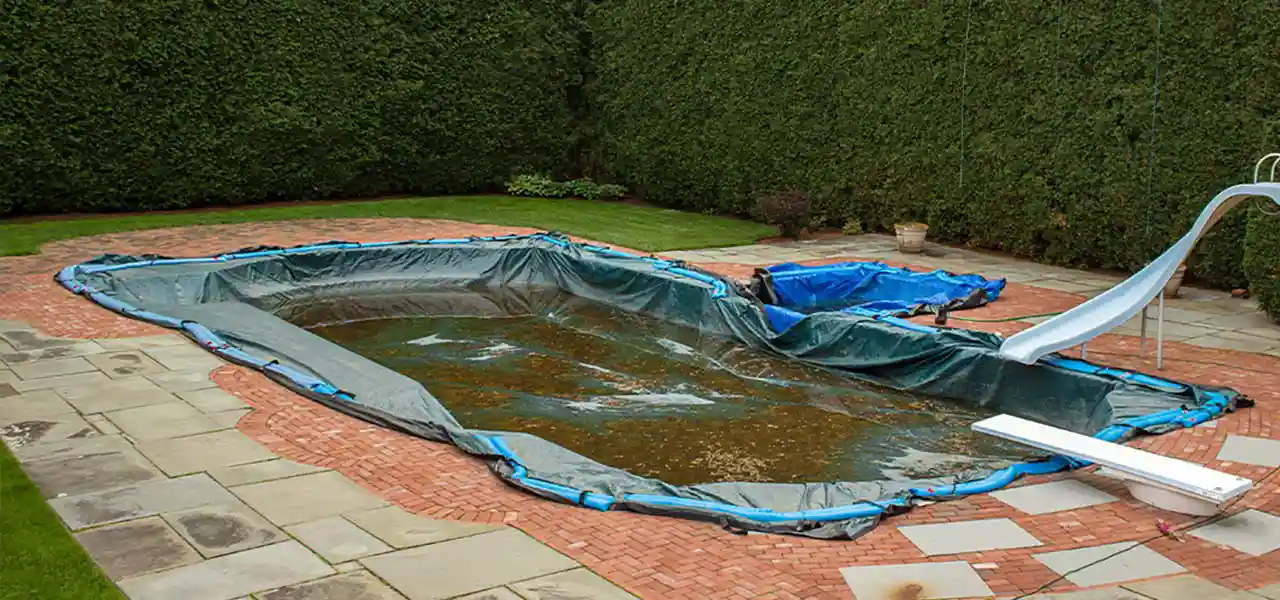
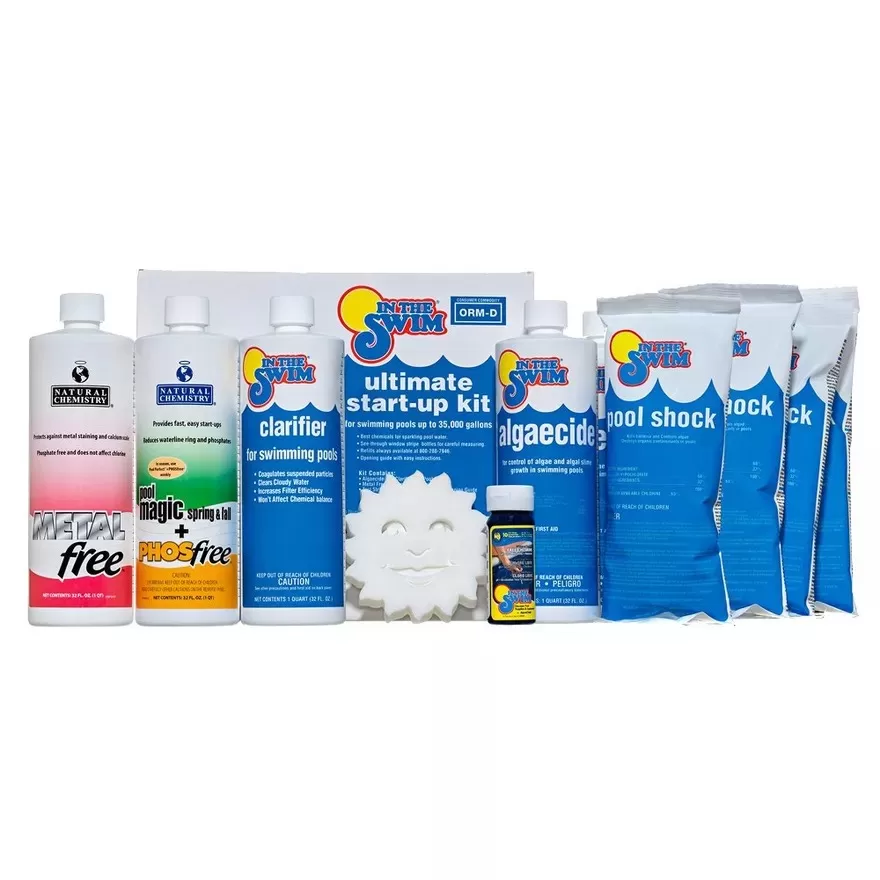
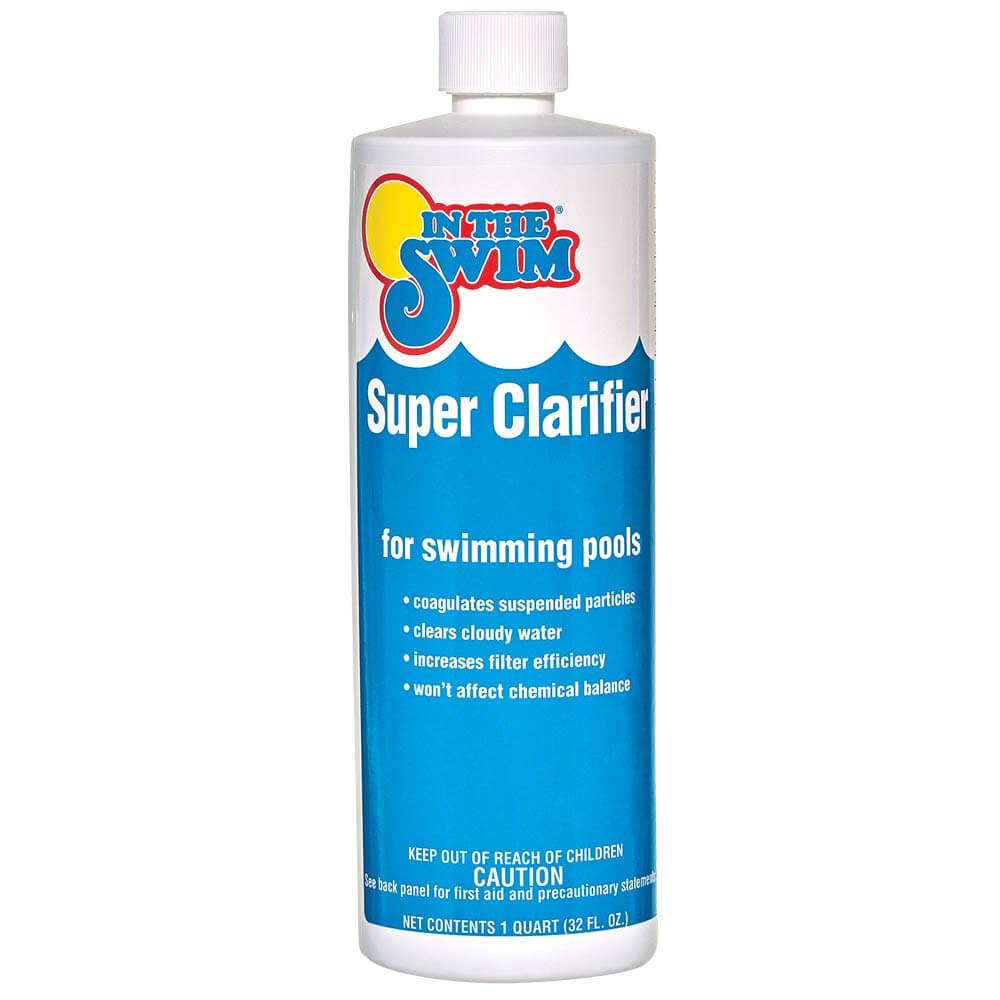
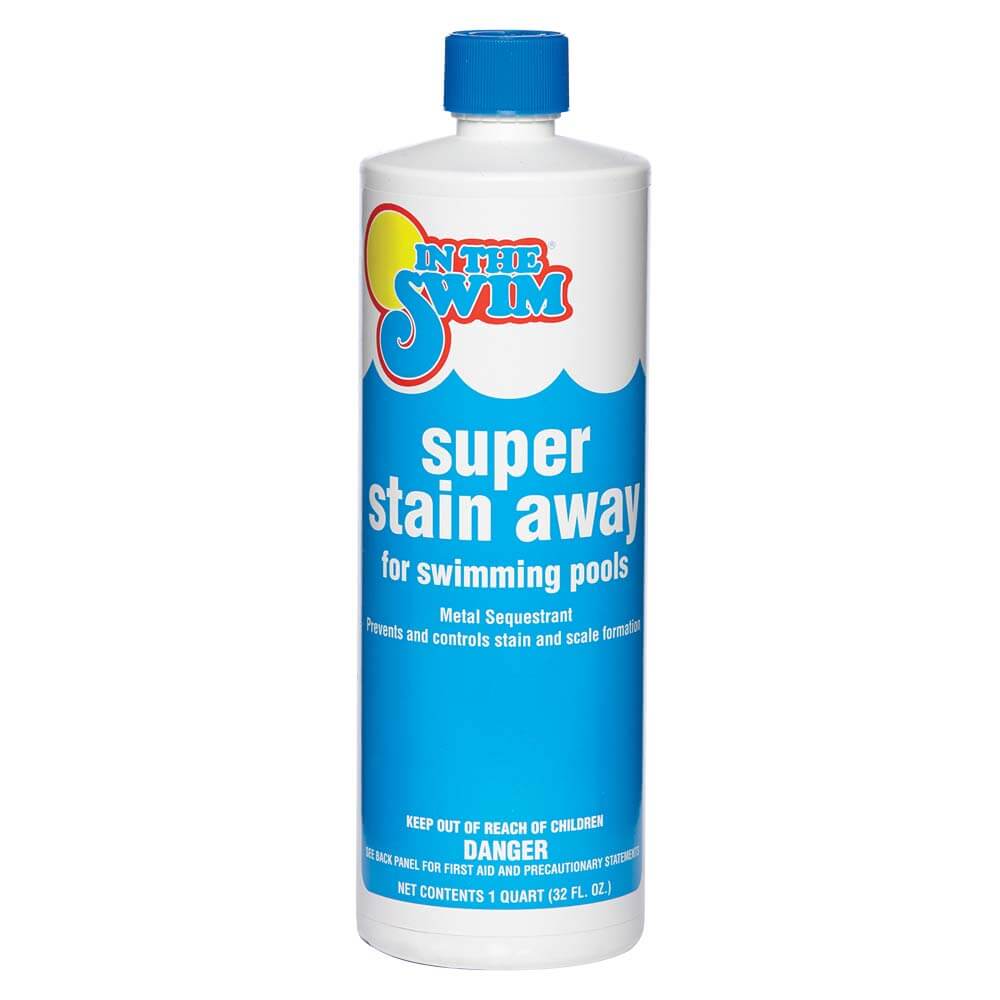

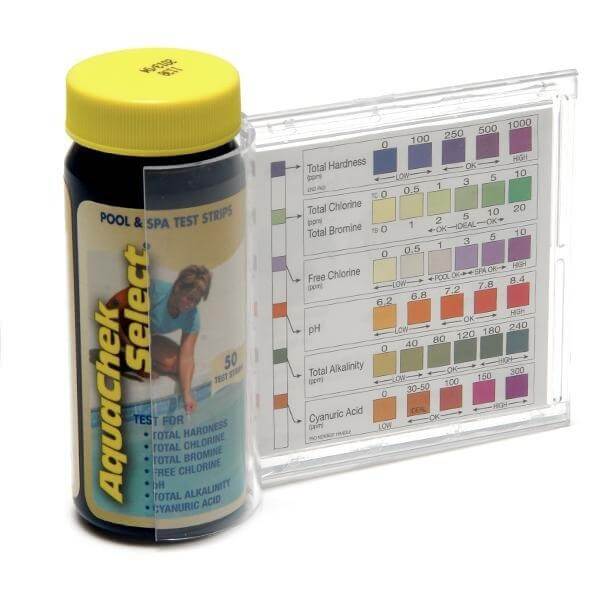
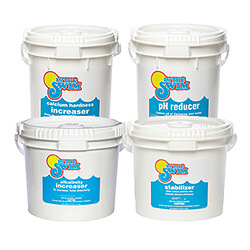
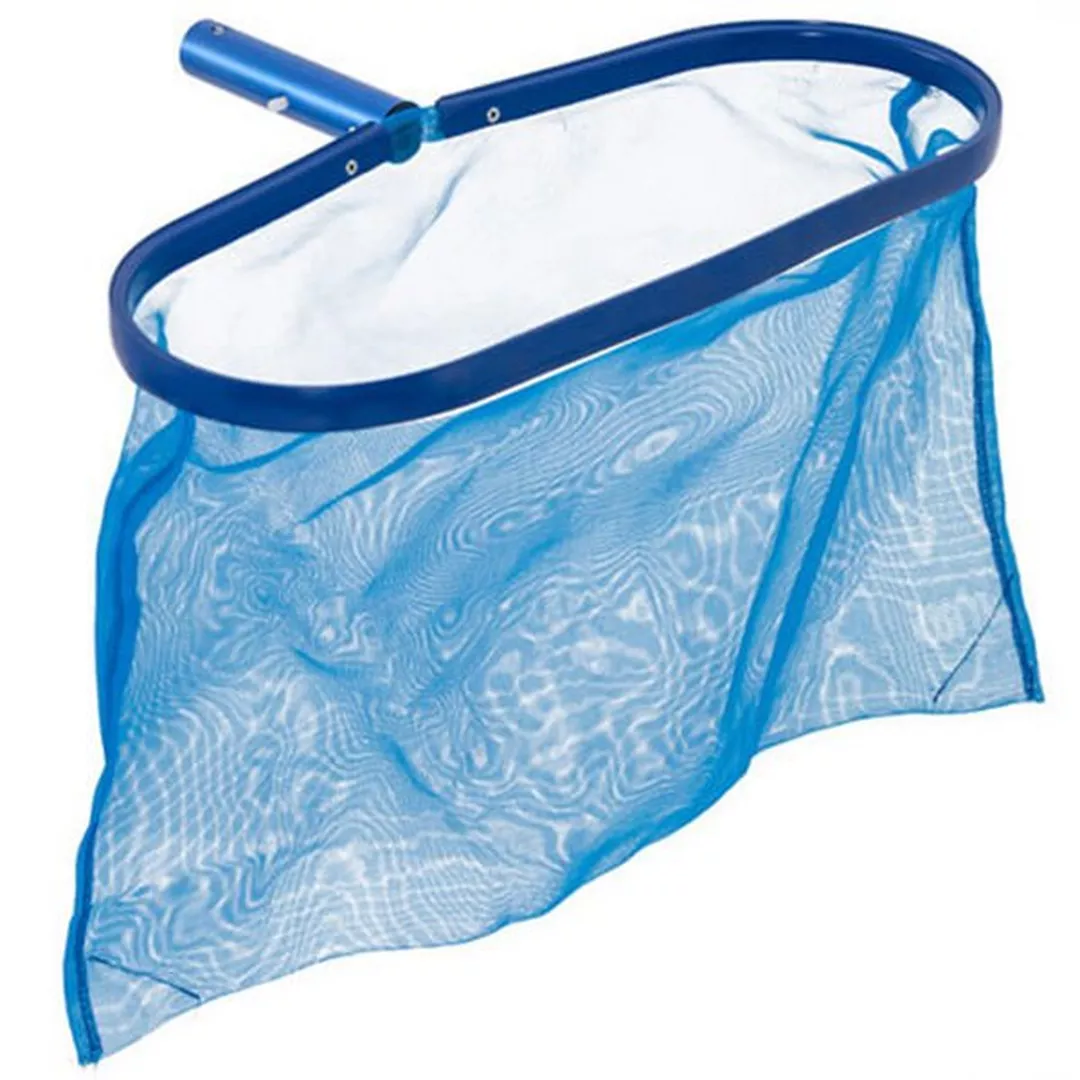

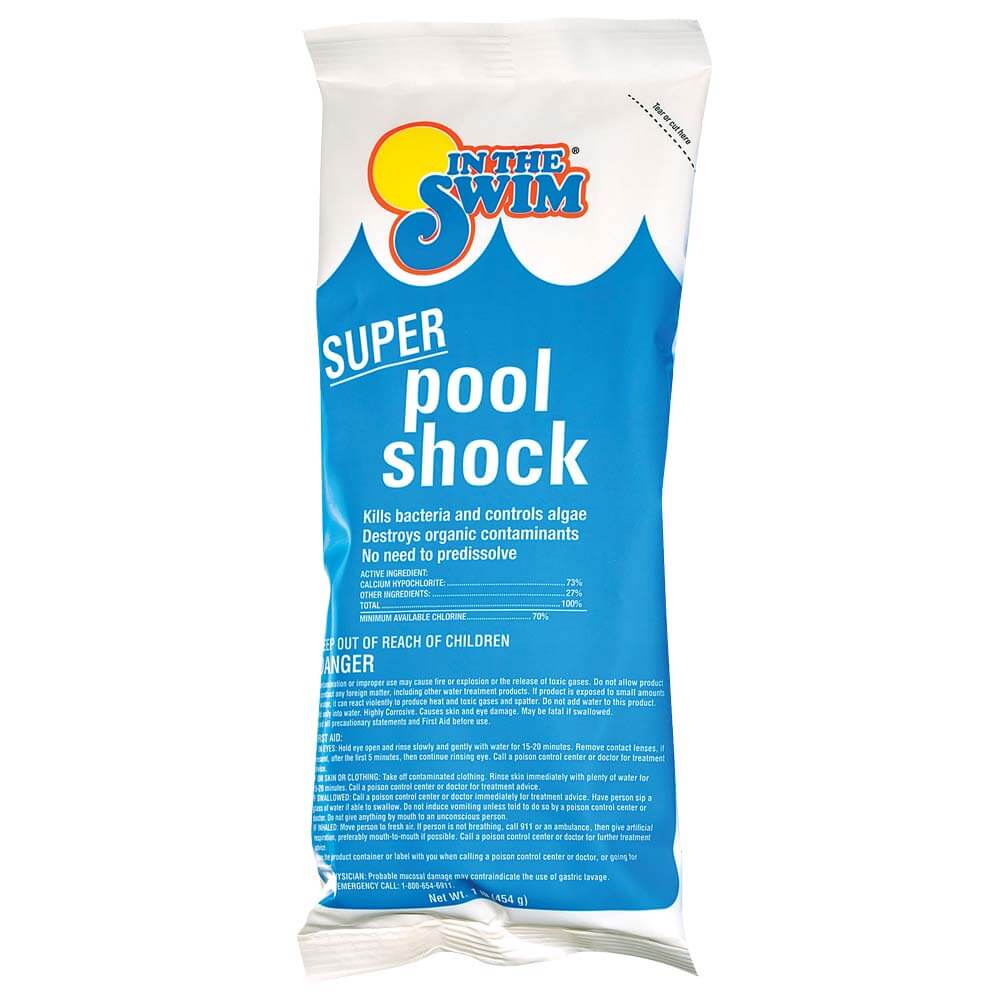
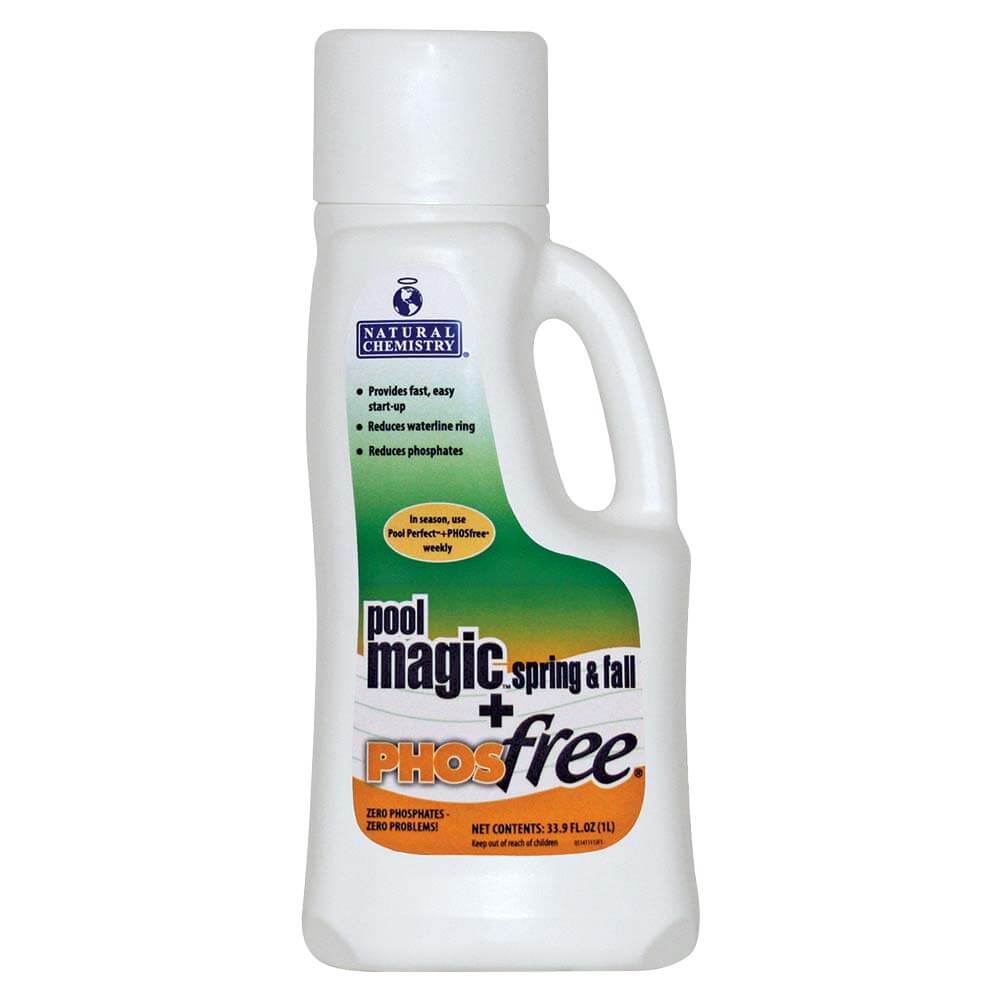
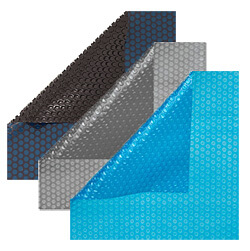
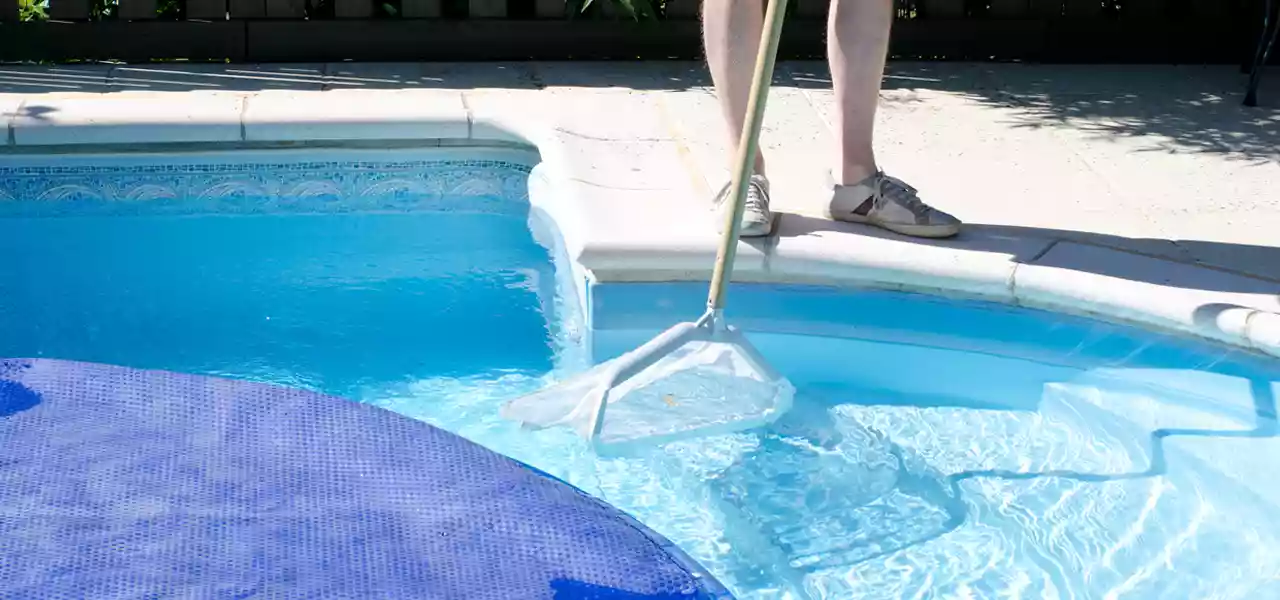
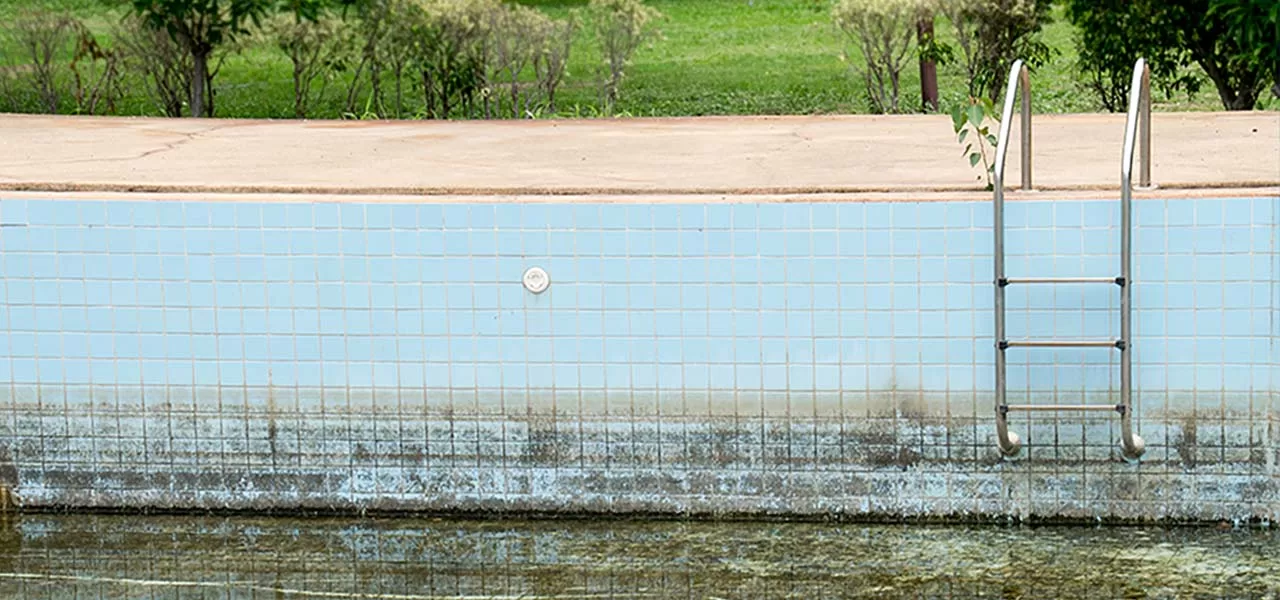
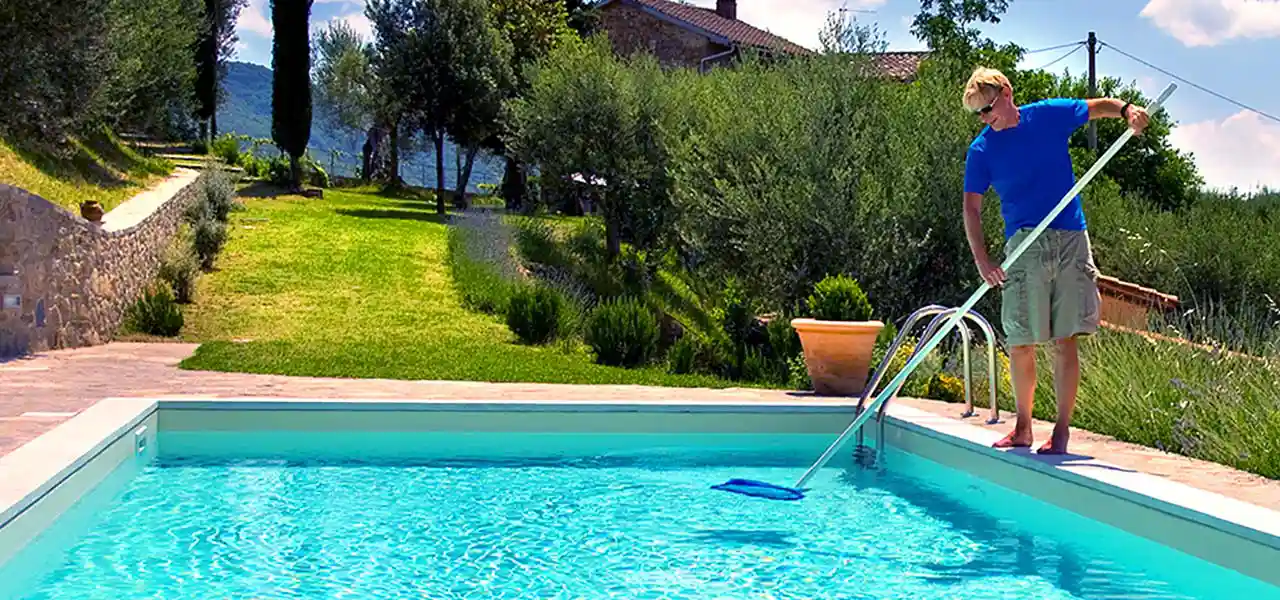
i have an above ground pool that is now empty. Can I cover somehow without filling it? It would be for a short term. Not worried if the liner gets damaged as I will replace anyway next season. Is there a cover that will stay up without water in it?
Hi, we don’t have any solid covers. If it was a small pool, you could build something out of 2×4’s and plywood, but why bother? Just leave it open…
I have an above ground pool that I have not opened for the past two years. The cover is starting to fall apart and I plan to get a new one. What other steps do you recommend. I don’t plan to reopen it any time soon. I don’t know what it looks good under the cover. The pool is located in Rhode Island so it goes through a rather tough winter.
Thanks
Hi Henry, probably no need to do anything to the pool or water, perhaps check the pH, which is probably very high, and add a pH decreaser (acid) to drop it down to more normal levels. Other than that, just cover it up tightly
We have moved out of state, and are trying to sell our now vacant home. We have an in-ground pool with vinyl siding. Would really like to not have the cost of opening and maintaining the pool while the house is vacant. What are our options?
Zach, a realtor would advise trying to sell the home with a closed pool, it’s a big turn-off for people, as they think there is something majorly wrong with the pool. Even if it is stained and has some problems, it is usually best to have it opened. However, if you are already out of state, and it’s mid-July and you haven’t opened already… maybe it’s best not to – but it must be cleaned and treated, or the vinyl will become very stained. At the very least, the pH, alkalinity and calcium hardness should be checked and balanced, then the pool vacuumed (with a porta-vac) and brushed, and treated with a two quarts of algaecide, and then covered again tightly. That service may only cost you $150 or so.
Hi, we have an above ground pool probably around 20ftX10ftX48in. It does not have a cover and it has not been used within the past 3 years. The pump doesn’t work and there’s lots of algae. I have called several repair pool places with no luck due to covid I am assuming. What do you suggest I do? we got a water shop vac and I don’t think the machine worked because it kept over heating and it would immediately stop. We weren’t able to return it. I need advice/help. Thank you!
Hi Claudia, you could rent a submersible pump or a small trash pump to empty the pool, spraying and scrubbing as the water lowers, so it won’t dry on. Use a pressure washer, from 2-3 feet away if needed. Before filling, be sure to have your filter/pump in hand (they are in big demand now, and short supply). Then refill, check pH and shock the pool, and run the filter every day for 12-24 hours daily. Keep chlorine tabs in a floater, and use weekly doses of algaecide and clarifier. Check out our Start-Up Kits, and have all chemicals on hand too, before filling.
I am purchasing a house with an inground pool – has a safety cover on it and the owner did not open it this year. I am not able to see the condition of the pool. Do I need to have it re-closed again before winter?
Hi Sharon, assuming that the pool is gunite (concrete), I would ask for the pool to be drained and cleaned in the spring (or now if you wish), paid for by the sellers. Or you could ask for $5K in escrow, to pay for possible unseen damage to the pool, damage that makes the pool unusable or inoperable, but not for aesthetic repairs. With pool/home inspections, the criteria is “operating as intended”, and does not extend to looking ‘brand new’. Some buyers may want the pool to be opened and operating for a week or so, and then re-closed (winterized), after the inspector can look at everything, but a good pool inspector should be able to see 95% of things, even if the pool is winterized.
We have an in ground pool that has a plaster surface (NO vinyl). We’re remodeling our home which will take approximately 18 months, during which we will not be living in the home.
I drained the pool about 8 weeks ago. It’s impractical to keep the pool filled during remodeling.
What are the implications? Will we have to re-plaster the pool? Any suggestions would be appreciated.
Hi Ron, when plaster or vinyl is exposed to air and temperatures, it can dry-out and become brittle. It won’t necessarily be damaged severely, and you may not have to replaster, but it would be better to leave the pool 3/4 full. There is also the concern that the pool may pop-out of the ground from a heavy storm with high water table, unless the pool is perched upon a hillside, with good drainage, which lessens the concern. I would refill it at least halfway full, then let it go green and fill with rain over winter. When the house is ready, drain the pool and acid wash it, then refill.
We had a fibreglass pool (salt water) installed March 2018 in Arizona. We are winter/spring residents so we do not use our pool from June-September. As you may be aware, AZ has a monsoon season in the summer which means lots of stuff (& water) gets into the pool & it’s too hot to put a cover on. (105 -115F outside)
We have a pool guy come twice a week to clean the pool etc. but he is recommending we purchase a Baracuda G3 Suction disc In ground pool cleaner as he says when he comes the filter doesn’t seem to be doing it’s job. So my question is: should we go with the Baracuda or should we just get a 2nd filter cartridge (rotate with the existing one) & just have him come every week instead? I mean, I don’t mind that it’s dirty, just don’t want our systems to get plugged up/damaged.
Hi – the cleaner will improve pool circulation slightly, and do 95% of the vacuuming – but it won’t help out a filter that is weak. With it hooked up constantly (to the skimmer), one skimmer suction will be lost, and if the filter clogs up, it will just stop. I would say it would be a good idea if the pool required heavy vacuuming every week, but also with a pool cleaner hooked up, there may be the need for regular 2x per week, checkups still. I would get a new filter cartridge, if he says the filter is having a hard time. If your filter is on the small side, buying a larger cartridge filter may be money better spent, over buying a suction pool cleaner.
Unable to open pool this year. Should we pump off the water off the cover?
It has more than 1/2 full, 16 X 24 above ground pool. You say to add bottle of algaecide. Do we need to add water? Cover is in good shape. Please advise. Thanks
Hi Cheryl, yes I would pump off the cover completely, and then fold it in on itself, to expose both sides of the pool. Add water to the pool to raise the level to 3-6″ below the skimmer entrance. Check pH level of pool water, and balance if needed, then add a bottle of algaecide. Brush and skim the pool, and then pull the cover back over the edges again and secure tightly. You can set up an automatic cover pump, to keep the cover pumped off.
Hello,
thanks for your article. It was very helpful. Unfortunately, I have an in ground pool that wasn’t opened in 2 years. the cover is now full of a few feet of dirty water, leaves, etc. It sort of looks like the first picture that you posted. I think the cover probably has a hole in it. What should I do now?
Yehuda, probably the best thing may be to dump the cover contents into the pool and immediately begin pumping it out with a Trash Pump, rented from a local rental shop. Get enough discharge hose to pump to a location that can handle the gunk and smelly sludge. Hose it down as you go, so it won’t dry on the walls. If you have a vinyl liner, sandbag the shallow end, to keep the liner in place. Drain it completely and use TSP and scrub brushes and very light pressure washing, or a hose, to clean. Then pump out the cleaning water. Then refill the pool quickly and rebalance. If the liner is wrinkling, it may need to be ‘reset’ with a vacuum. For gunite/plaster pools, once the pool is drained, hydrostatic relief plugs should be opened to allow any water under pressure to enter the pool. Then the pool can be acid washed and/or pressure washed to clean the surfaces. Neutralize the pH of the waste water before pumping out of the pool. Then refill the pool quickly and rebalance.
If I have an inground cement pool that I am not opening this year for many reasons, can I just lower water level like in the fall for winterization and keep it covered, without adding chemicals throughout summer? I don’t believe we will get enough rainfall to fill it, so I think I’ll be fine that way, but will it stink my neighbors out and also will it ruin my cement from the algae? It will stay covered with a mesh cover. Also will my mechanics, filters, pumps etc. get ruined not using them for a year?
Hi Wendy, good questions! Yes you can keep the pool covered tightly and closed (winterized). Be careful not to remove plugs to un-winterize the pipes. The water level should be kept 6-12″ below the skimmer, or below the bottom of the tile, and 12-18″ from the cover. Use a small submersible cover pump, placed on the second step or swimout. This will keep the water cooler than if it is close to the cover. Sun makes it’s way thru mesh safety covers however, so you will need to use some chemicals, and check the pool pH level, to keep it correct. I would suggest a bottle of good algaecide, a 60% polymer like our Algaecide 60 Plus, added every 4-6 weeks, along with brushing the pool walls thoroughly. If you leave the end cover springs connected, you can remove all the side springs, and fold the cover onto itself, so it exposes both long sides of the pool for easy skimming and brushing. Afterwards, button the cover up tightly again. Doing these things will help protect the plaster finish, and reduce stains. Next year you will likely want to drain the pool and acid wash. The equipment will be ok – you may just want to test fire the pump a few times, Just turn on the pump for a few seconds now, and then every few months, to remove any rust and dust inside the motor.
We have a winterized in-ground pool with a mesh cover. The water is puddled on top of mesh cover right now. We are not planning to open the pool this year for various reasons. I see from other responses that we need to get the water off the surface and peer the level with a siphon. We will do that first, but then can we add any maintenance chemicals without hurting our year old vinyl liner? We would have no pump running since it is winterized. We are right next to nature area with swamp, frogs, and many critters too. Thanks.
Hi Mindy, yes you will want a small electrical submersible pump, aka pool cover pump – to keep up with the rain. A siphon is a lot of trouble and does not work as well, but can work if needed. Keep the water level about 12″ below the cover, or 6″ below the skimmer, to keep it cooler (not as warm). Add monthly a bottle of algaecide, and brush the walls and floor of the pool. You can open the cover along both sides, folding the cover on top of itself, to expose large areas of the pool. Skim and brush monthly, add algaecide and you could also use a pool floater with chlorine tablets, and all of the baffle holes closed, to last longer. This will keep algae from getting out of control and causing stains. Also check your pH level and keep it around 7.4-7.6. You can pour pre-dissolved chemicals into the pool, and brush to distribute…
My dad has had bad health and I am not sure what to do about salt water I ground pool for the season, it was winterized and closed in Sept 2018 . What should I do ? Can it stay closed
Hi – in most cases a pool can stay closed – however it will need some maintenance, either to pump off the solid pool cover, or keep the water level beneath a safety cover at the bottom of the pool tile. In both cases, an automatic pool cover pump can accomplish the task. Also, the pool water chemistry should be checked to be sure that it’s not gone too far out of whack. Finally, more algaecide and chlorine floaters should be added, and re-added every 30 days or so, to keep the water from going too far gone, and staining the surfaces, or damaging the liner or plaster.
If I want to cover my inground pool for the summer and not unwinterize it or that out the plugs will.it hurt it
Hi Rita, if you cover it tightly, and maintain the water somewhat it will be fine. If you cover it and leave the country for 6 months, then you may have some surface problems, like staining and spalling or other deterioration. But if you can maintain the cover, water level, water chemistry, it won’t be so bad.
I winterized my 21′ round pool last winter and covered it. Do I need to do any thing if I am going to keep it covered for summer and winter this year. Will the winterizing chemicals last for a second year
Hi Peter, great question. The chemicals won’t last – especially as the water warms up. If the cover is good however, it should keep most of the algae from growing, because it will block the sunlight. I think what I would do is add another bottle of algaecide this spring, and then another quart in early August. This should keep algae growth and staining to a minimum. You should also check the pH level once or twice this season, to be sure it’s not very high or very low. And be sure the pool does not become accidentally un-winterized. 🙂
Hello I have an in ground pool that has been closed for 5 years it’s vinyl liner, I just replaced the safety cover because the old one was already ripped and I drained it a little to blow out the lines but the water is just really bad, what do u recommend me when I open it on the spring?
Hey Vicente – great question, I will answer as though you will DIY restore the pool. First remove the cover and rent a trash pump with suction hose and enough 3″ discharge hose to reach the storm drain or safe discharge area. Environmentally speaking, it’s good organic sludge, not toxic, but ugh. Get it all drained out (about 20 minutes!), Hose the pool down as it drains, then use push brooms to help sweep and wash the debris to the deep end. Remove the main drain cover and put the hose end directly in the drain pot, without the strainer on the end of the hose, to get the remaining gunk.
Now measure the pool for your new liner, using our measuring form 🙂 and get your price and get it ordered. Also find out which type of main drain, skimmer, light and returns you have (usually Hayward), so that you can order new faceplates and gaskets. Test the pool light to see if it works, only for 1-second when not underwater, or it will overheat. Check out the other pool parts needed like skimmer baskets, lids, main drain cover, ladder (with ladder bumpers), diving board, etc… then check out the filter system, to be sure the pump motor turns on, and nothing looks broken with the filter, pipes or valves, and the electrical connections from timer to pump look solid. Keep the pool liner in the pool until your liner (and all your other supplies) are on the way, to protect the walls and floor from any heavy weather. Then in one weekend, you can do the whole thing.
Cut up the liner with razor knives, and roll it up into tubes, to eject from the pool. Inspect the liner track, and the walls and floors for damage, The walls may be rusty and the floor may have some algae stains, cracks, divots. If the pool has a vermiculite base or a vermiculite and concrete base, you can use that to make repairs to the floor, or for filling between walls and floor, if gaps exist. Usually the deepest area, called the hopper, around the main drain, is a solid concrete pour. If your pool floor is sand, and not a hard bottom, let me know, that’s a whole nother thing. Walls can be sanded and painted, and foamed if very rusty, if there are holes they can be patched with sheet metal. Duct tape the wall seams, the vertical joints, and decide if you need to use wall foam with spray adhesive to cover the walls and protect your new liner. You may be lucky and very light wall and floor prep work will be needed, but still plan a full day for cleaning and prepping the pool interior, to make a nice smooth surface for the new liner.
When the pool is ready, your helper and maybe another person or two (depending on size of pool) are needed to pull the new liner over the pool and lock it into the track at the top of the wall. Then a liner vac like the Cyclone liner vac is used to ‘set’ the liner, or suction it against the walls and floor. Once it is set well, without wrinkles that won’t push out, start adding water. When 6″ is in the deep end, carefully walk-down and install the main drain ring and cut out the liner, and install the main drain cover. Continue to fill with 2 hoses or more, until the water reaches the first step, then cut in the walk-in steps, if you have them. You can now remove the vacuum and continue to fill and then when the water reaches the skimmer, cut-in the skimmer, returns, and light, installing new faceplates and gaskets. Continue to fill until mid-skimmer then flood the lines, and turn on the filter pump. Balance the water chemistry, add chlorine, and jump in!
I JUST FILLED MY POOL TODAY (9/11/18)… HAVE NOT PUT ANY CHEMICALS IN IT YET BUT I WANT TO WINTERIZE IT WHAT DO I DO… IT IS 18X52 ABOVE GROUND…
Hi Zinthia, for winter, order a winter cover, air pillow, cover pump and a winter kit. For now, until that arrives, fill a chlorine floater with 2-3 tablets, and add 1 lb of shock or 1 gallon of bleach, to keep the water fresh before closing.
There are lots of trees and debris around our in ground pool during winter, so in spring it takes a long time to “open the pool”. Besides this, there is stagnant water on the mesh cover and frogs have too much fun that the neighbors do not enjoy.
Should I buy a solid safety cover with “Kleen-Screen” drain or “sure-Flo” drain?
Hi Jo, there are a few things to do – with a mesh safety cover, it’s important to keep the water from touching the cover, which warms the water and creates a leaf trap in the center of the pool. use a small submersible or siphon hose in springtime to keep water from touching the underside of the cover. Secondly, using Natural Chemistry’s Pool Magic Spring & Fall with PhosFree (long name!) when closing the pool is a huge help for messy mesh safety cover pools. If your cover is about ready to be replaced, yes going with a solid safety cover is a whole different world! Especially, if you specify a cover without any center drain at all – with no drain panel, the water is almost as clear as when you closed it, just a little hazy. When ordering without drain panel, they sell the cover with an automatic cover pump, in order to maintain their ASTM safety cover standards.
I have a sand filter but sand is coming into the pool. in less than a month I have to close the pool (NY). I don’t know if I should buy a new filter now or close the pool until the spring. The water is turning green. can I still use the filter? I worry that all the sand will come into the pool.
Hi Juana, When sand is coming into the pool from a sand filter, that usually means that one or more of the laterals is broken (in the bottom of the tank, beneath all of the sand). It doesn’t mean that you need a NEW filter, but just new sand and new laterals, or a new standpipe/lateral assembly. Find your filter here: https://www.intheswim.com/c/filter-parts?pcode=208&scode=SOCIBLOG – there are usually 8 laterals in [most] sand filters, best to replace the entire set if possible.
The sand that comes into the pool can be vacuumed back into the tank, to limp along until closing, but one day it may blow out completely, usually during backwashing – or you may find a larger pile of sand beneath the wall returns. You could also run the pump longer each day, to compensate for reduced filtration. A Slime Bag could also be used on the return line, to catch the sand, and help filtration.
Also, be sure that it is sand in the bottom of the pool, and not a tan colored dust, which looks like sand… Dust will ‘poof’ when hit with a brush, while sand grains will roll around and not dust-up very much, or get in the pool and feel it – if it feels like sand… Thanks, good question!
I have decided to not open my inground pool this year. It needs a new liner. I figure since the liner needs to be replaced I’m not worried about alge build up and the like. My question is: what is the importance of the water level remaining 8-10 inches below the tile (I’m assuming you mean the skimmer?) does it have anything to do with the lines (pipes and such that run underground?) If I don’t open the pool, do I have to perform a winterization on it at the end of the season as I would if I had opened it this year?
Hi Sara, when lowering water for winter, we typically drop it 8-10″ below the skimmer, or 18″ total from the top of the coping, when using a safety pool cover. For solid pool covers, it’s much less 3-4″ below the skimmer. In summer, with the pool closed, it doesn’t matter so much where the water is, although if kept lower, algae growth will be less than if the water is touching the bottom of a safety cover, if that matters. But you don’t want the water to go too low – if you emptied the pool for the summer for example, the walls and floor could become damaged. And as long as you dont ‘unwinterize’ the pool, by removing plugs, it will stay winterized. The only thing that need be done this fall is to lower the water level, and empty out the skimmers, with a scoop or a hand pump (bilge pump).
HOW DO I KNOW THE NUMBER OF GALLONS MY POOL HOLDS?IT IS IN-GROUND AND IT IS 20′ LONG AND KIDNEY -SHAPED. THE DEEP-END IS OK FOR DIVING! THANKS, STAN
Hi Stanley – the formula for figuring pool gallons is Length X Avg Width X Avg Depth X 5.9 (or 7.5 for rectangle pools)
How long is it leaving water out of it before causing problems in an inground pool
Hi Beverly, that’s a hard question to answer definitively, because every situation is different. For inground concrete pools, the danger is 1) hydrostatic pressure can pop the pool out of the ground, and 2) pool plaster likes to stay wet, or it can develop cracking and shrinking. This can cause delaminated areas to pop-off, or lead to further delaminations. In the first case (1), as long as you open the hydrostatic relief valve in the main drain, and maybe 1 or 2 others in the floor, there is little danger of popping the pool. For the second case (2), a pool can sit empty for weeks or perhaps months in cool weather, without showing signs of damage. Temperature extremes however, are what cause more drying, and expansion/contraction, which water normally helps regulate, so if temps are very cold, or very hot, I would suggest keeping the pool full.